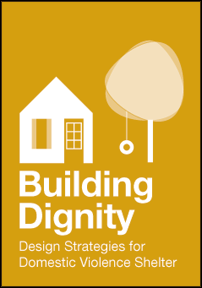Making the transition to becoming a trauma-informed organization and providing trauma-informed services involves a change in the way we understand our work, structure our organizations, and we interact with survivors. For some organizations, this will involve a fundamental shift in approach; for others it will mean enhancing existing practice to attend to the particular ways that trauma can affect us as survivors, providers, and organizations.
Although a trauma-informed approach is consistent with principles of DV advocacy, it is more than just “good advocacy practice.” It requires a specific awareness of how trauma can affect our own responses and interactions with others. It also requires the intentional development of supports for ongoing reflection, learning, skill development and self-care to ensure that our interactions are consistent with our principles and to help sustain us in the work.
A trauma-informed approach also takes into account that the environment in which services are delivered can affect how services are received. This means creating a physical and sensory environment that is welcoming, inclusive, and healing; a programmatic environment that is responsive to both individual and collective needs; a cultural environment that is attuned to the people being served; and a relational environment that is caring, respectful, empowering, and emotionally and physically safe.
Becoming trauma-informed is at heart a relational process and one that is continually evolving. It requires the commitment of every member of the organization. It means being willing to honestly assess existing policies and practices and to keep supporting each other as we continue to grow and learn.
The tools in this section provide practical guidance to facilitate this process. Some resources in this section were designed specifically for DV settings or for DV and mental health organizations that are forming collaborations. Others were designed for use in different service settings but can be easily adapted for DV programs.
 Building Dignity: Design Strategies for Domestic Violence Shelter, A Project of the Washington Coalition Against Domestic Violence
Building Dignity: Design Strategies for Domestic Violence Shelter, A Project of the Washington Coalition Against Domestic Violence
This website extends the work of the WSCADV on shelter rules and parenting in shelter by exploring design strategies for domestic violence victim emergency housing. Thoughtful design dignifies survivors by meeting their needs for self-determination, security, and connection, while supporting parenting and minimizing the need for rules. The ideas on the website reflect a commitment to creating welcoming, accessible environments that help to empower survivors and their children, and have their origins in conversations with shelter residents and advocates. The site is designed to be useful to advocates, executive directors, architects and designers.
 Creating Cultures of Trauma-Informed Care (CCTIC)
Creating Cultures of Trauma-Informed Care (CCTIC)
The Creating Cultures of Trauma-Informed Care (CCTIC) model engages the system or organization in a culture change, emphasizing core values of safety, trustworthiness, choice, collaboration, and empowerment in program activities, physical settings, and relationships. Implementing cultural shifts of this scope requires the full participation of administrators; supervisory, direct service, and support staff; and consumers. CCTIC uses a structured model for programs to review and set priorities for change; a checklist is used by programs as part of an initial review and as a tool for monitoring progress; and an implementation form guides changes. While designed initially for mental health settings, these tools can be adapted for DV agencies as well. Contact Community Connections to discuss consultation and materials.









